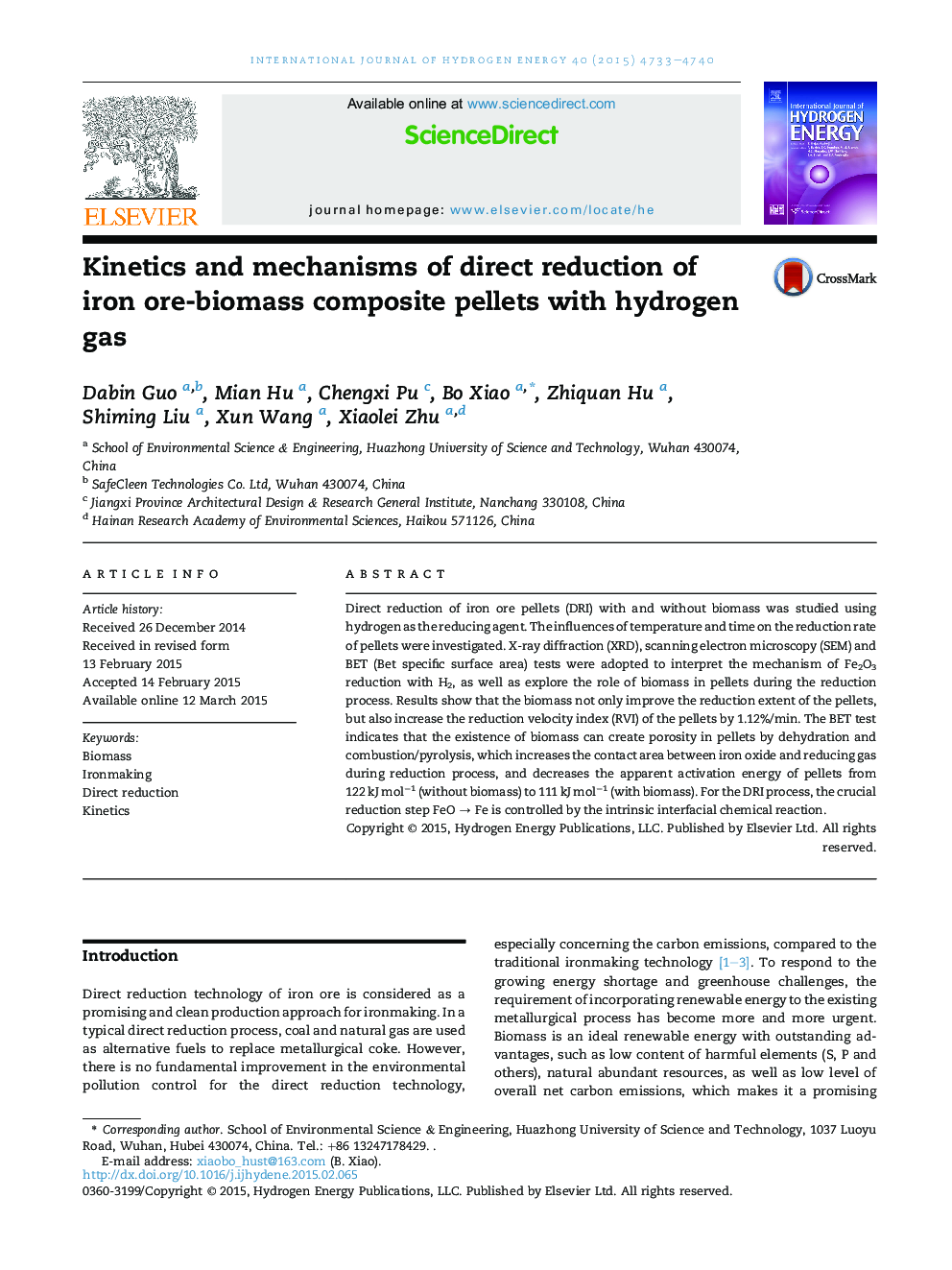| Article ID | Journal | Published Year | Pages | File Type |
|---|---|---|---|---|
| 1271582 | International Journal of Hydrogen Energy | 2015 | 8 Pages |
•Higher temperature can improve reduction rate and reducibility.•The reduction rate was controlled by an interfacial chemical reaction with H2.•Biomass can improve the reduction extent of pellets.•Biomass can increase the reduction velocity index (RVI) of pellets by 1.12%/min.
Direct reduction of iron ore pellets (DRI) with and without biomass was studied using hydrogen as the reducing agent. The influences of temperature and time on the reduction rate of pellets were investigated. X-ray diffraction (XRD), scanning electron microscopy (SEM) and BET (Bet specific surface area) tests were adopted to interpret the mechanism of Fe2O3 reduction with H2, as well as explore the role of biomass in pellets during the reduction process. Results show that the biomass not only improve the reduction extent of the pellets, but also increase the reduction velocity index (RVI) of the pellets by 1.12%/min. The BET test indicates that the existence of biomass can create porosity in pellets by dehydration and combustion/pyrolysis, which increases the contact area between iron oxide and reducing gas during reduction process, and decreases the apparent activation energy of pellets from 122 kJ mol−1 (without biomass) to 111 kJ mol−1 (with biomass). For the DRI process, the crucial reduction step FeO → Fe is controlled by the intrinsic interfacial chemical reaction.
